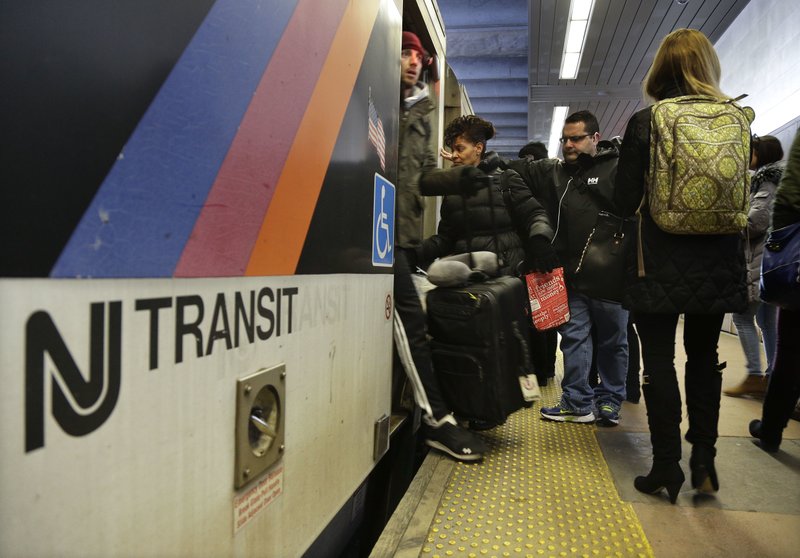The railroad whose rush-hour train slammed into a New Jersey station last month, killing a woman and injuring more than 100 people, has had more accidents and paid more in fines for safety violations than any other commuter railroad in the country over the past five years, federal safety data show.
Trains run by New Jersey Transit, which operates the nation's second-largest commuter railroad, have been involved in 157 accidents since the start of 2011, three times as many as the largest, the Long Island Rail Road, according to an Associated Press analysis of data from January 2011 through July 2016.
New Jersey Transit had a significantly higher accident rate during that span than the rest of the nation's 10 largest commuter railroads, ranked by weekday ridership, and had the highest rate of accidents attributed to human factors, such as speeding and drug impairment. In all, the accidents have caused more than $6 million in damage and injuries to 13 passengers.
At the same time, the state-run railroad has paid $519,280 in fines to settle 183 federal safety violations -- nearly $160,000 more than the amount paid by Metro-North, the suburban New York railroad that carries slightly fewer weekday riders. They included 33 violations for drug or alcohol use and 33 violations of operating procedures, both more than any other commuter railroad.
[NEW JERSEY TRAIN CRASH: View map of station and data on other wrecks]
"It speaks to a culture of not caring, of indifference to the safety of commuters, and paying fines without worrying about the effect of their infringements," said Michael Lamonsoff, a lawyer whose clients include a victim of the Hoboken crash. "This accident is testament to the fact they really don't care about their commuters."
New Jersey Transit officials declined to comment, citing the ongoing investigation into the Hoboken crash. In the past, they've touted safety as their top priority.
Among other key findings in the review: New Jersey Transit had an accident rate of 2.7 per 1 million miles traveled, nearly one full accident per 1 million miles higher than that of the second most accident-prone railroad, the Chicago area's Metra; and New Jersey Transit had 75 derailments, meaning at least one wheel left the track. That's more than the next four railroads combined. Its derailment rate of 1.27 per million miles traveled was nearly double that of Metra's.
Federal regulators found dozens more violations and issued additional fines during an audit that began months before the Sept. 29 crash at Hoboken Terminal renewed questions about New Jersey Transit's safety practices. Details of the audit, spurred by an uptick in accidents and a rash of senior management departures, have not been made public and its results were not counted in the AP's analysis.
New Jersey Transit's commuter railroad serves more than 320,000 weekday riders. It is the third major commuter railroad to face a federal safety investigation in the past four years, after inquiries into Metro-North's spate of major accidents in 2013 and three potentially catastrophic safety violations within a week in 2014 on Metra.
The railroad started a system for employees to confidentially report problems and close calls without fearing punishment in 2009 and opened a system safety office in 2014 amid criticism that its safety operation was understaffed. Still, like many railroads, New Jersey Transit has yet to adopt positive train control technology designed to automatically slow or stop trains that are going too fast.
Deep budget cuts and employee turnover have undermined the railroad's commitment to safety, said Stephen Burkert, the head of the union representing New Jersey Transit train conductors.
"We're always looking for safety. We want the safest railroad possible," Burkert said Thursday. "I don't want to hear that because [Gov. Chris] Christie cut a budget we don't have money to implement a safety device that would have prevented this [accident] or prevented something in the future. I never want to hear safety has a price tag."
The Hoboken train was going double the 10 mph speed limit when it crashed into a bumping post and hurtled into the waiting area, National Transportation Safety Board investigators said. The impact sent debris raining down, killing a 34-year-old woman standing on the platform.
A Section on 10/14/2016
